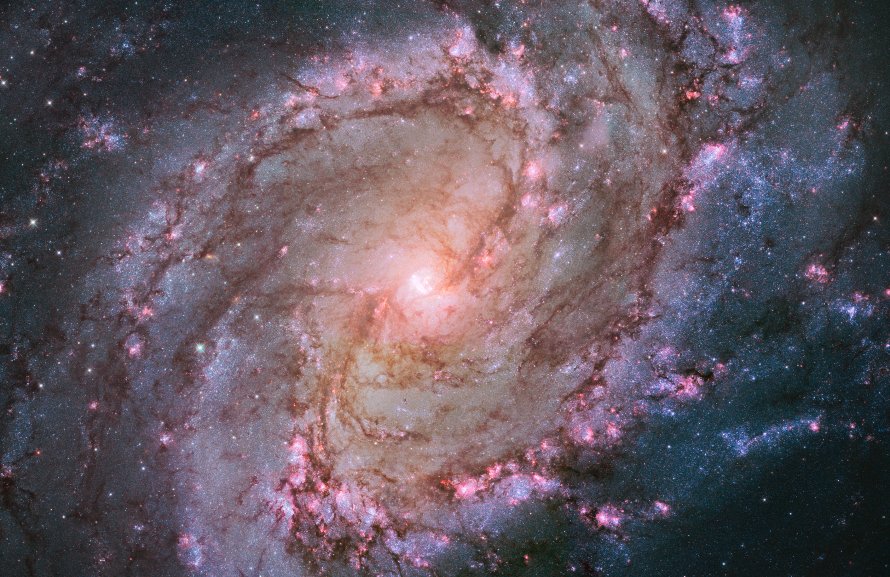M83 (NGC 5236) - Southern Pinwheel Galaxy
Messier 83 (NGC 5236), also known as the Southern Pinwheel Galaxy, is a barred spiral galaxy located in the constellation Hydra in the Centaurus A Group of galaxies. M83 is 14700000 light years away from Earth.
M83 is best viewed during mid-summer, is magnitude 7.5, and can be viewed with binoculars. M83 is 13' x 11.5' in apparent size. For reference, the full moon is 30'.
Observing difficulty: Intermediate
- Name:
- Southern Pinwheel Galaxy
- Type:
- barred spiral galaxy
- Constellation:
- Hydra
- NGC or IC:
- NGC 5236
- Magnitude:
- 7.5
- Viewing:
- binoculars
- Size:
- 13' x 11.5'
- Distance (light years):
- 14700000 LY
- RA:
- 13h 37.1m
- Dec:
- -29 52'
- Season:
- mid-summer
- Galaxy group:
- Centaurus A Group
- Messier Marathon #:
- 67
* The naked eye can see up to magnitude ~7-8 objects under ideal dark sky conditions.
A Detailed Examination of the Southern Pinwheel Galaxy
Messier 83 (M83), affectionately known as the Southern Pinwheel Galaxy, is a remarkable barred spiral galaxy situated in the Hydra constellation. As one of the closest barred spiral galaxies to Earth, it offers researchers and astronomy enthusiasts alike an ideal opportunity to study the intricacies of spiral galaxy dynamics and star formation.
Characteristics of M83
M83, a member of the Centaurus Group of galaxies, is recognized as one of the most detailed galaxies observable from Earth, given its proximity and orientation. It boasts a distinct barred spiral structure, with its prominent, elongated bar and well-defined spiral arms making it a textbook example of barred spiral galaxies.
One of M83's notable characteristics is its intense star-forming activity, particularly in its nucleus and along its spiral arms. This is inferred from the galaxy's strong ultraviolet radiation and the numerous supernova events observed. Since 1923, six supernovae have been recorded in M83 - a testament to its ongoing stellar dynamism.
Magnitude and Size
The Southern Pinwheel Galaxy, with an apparent magnitude of 7.6, is a notable target for astronomers armed with small telescopes or high-powered binoculars. It covers an area of approximately 12.9 by 11.5 arcminutes on the sky, which corresponds to a linear size of about 55,000 light-years, considering its estimated distance of 15 million light-years from Earth.
Finding and Viewing M83
Locating M83 can be somewhat challenging due to its southern declination. It is best observed from southern latitudes, but can also be seen from mid-northern latitudes during the spring and early summer months when Hydra is visible in the sky.
To find M83, start from the bright star Spica in Virgo, then locate the stars Delta and Epsilon Corvi in the constellation Corvus. M83 lies along the line between these two stars, about a third of the way from ? Corvi. If you follow this line, M83 should appear as a faint, circular glow.
In a small telescope, M83 appears as a fuzzy, circular patch of light with a brighter center. The spiral arms and the bar structure are difficult to resolve without larger telescopes. However, under good conditions, hints of the spiral structure may be observed.
In summary, the Southern Pinwheel Galaxy is a fascinating celestial object that offers valuable insights into the study of barred spiral galaxies and star formation processes. Although it can be a challenge to locate from some latitudes, the view of this spectacular galaxy is definitely worth the effort for both the casual stargazer and the seasoned astronomer.



